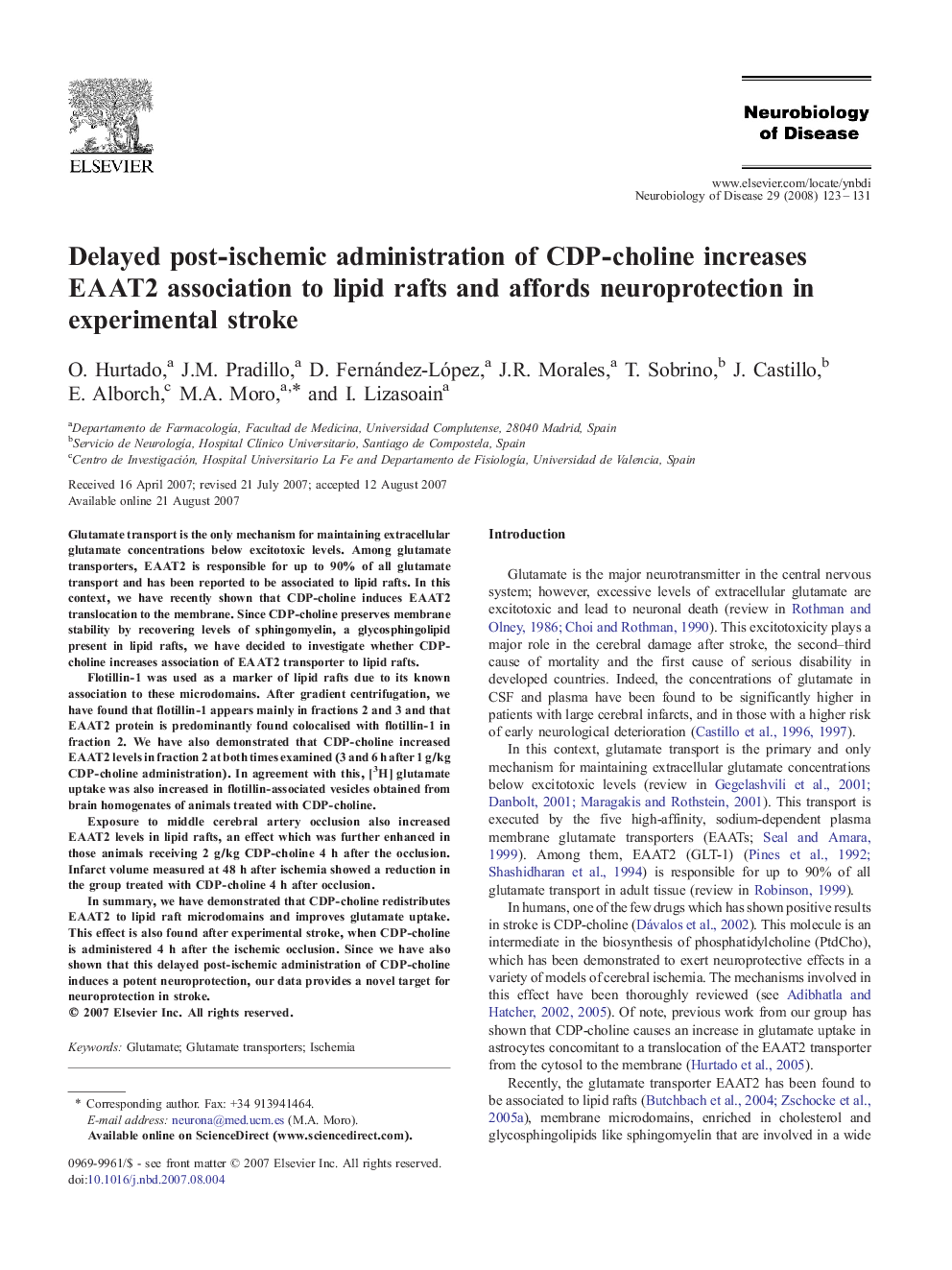| Article ID | Journal | Published Year | Pages | File Type |
|---|---|---|---|---|
| 3070698 | Neurobiology of Disease | 2008 | 9 Pages |
Glutamate transport is the only mechanism for maintaining extracellular glutamate concentrations below excitotoxic levels. Among glutamate transporters, EAAT2 is responsible for up to 90% of all glutamate transport and has been reported to be associated to lipid rafts. In this context, we have recently shown that CDP-choline induces EAAT2 translocation to the membrane. Since CDP-choline preserves membrane stability by recovering levels of sphingomyelin, a glycosphingolipid present in lipid rafts, we have decided to investigate whether CDP-choline increases association of EAAT2 transporter to lipid rafts.Flotillin-1 was used as a marker of lipid rafts due to its known association to these microdomains. After gradient centrifugation, we have found that flotillin-1 appears mainly in fractions 2 and 3 and that EAAT2 protein is predominantly found colocalised with flotillin-1 in fraction 2. We have also demonstrated that CDP-choline increased EAAT2 levels in fraction 2 at both times examined (3 and 6 h after 1 g/kg CDP-choline administration). In agreement with this, [3H] glutamate uptake was also increased in flotillin-associated vesicles obtained from brain homogenates of animals treated with CDP-choline.Exposure to middle cerebral artery occlusion also increased EAAT2 levels in lipid rafts, an effect which was further enhanced in those animals receiving 2 g/kg CDP-choline 4 h after the occlusion. Infarct volume measured at 48 h after ischemia showed a reduction in the group treated with CDP-choline 4 h after occlusion.In summary, we have demonstrated that CDP-choline redistributes EAAT2 to lipid raft microdomains and improves glutamate uptake. This effect is also found after experimental stroke, when CDP-choline is administered 4 h after the ischemic occlusion. Since we have also shown that this delayed post-ischemic administration of CDP-choline induces a potent neuroprotection, our data provides a novel target for neuroprotection in stroke.
